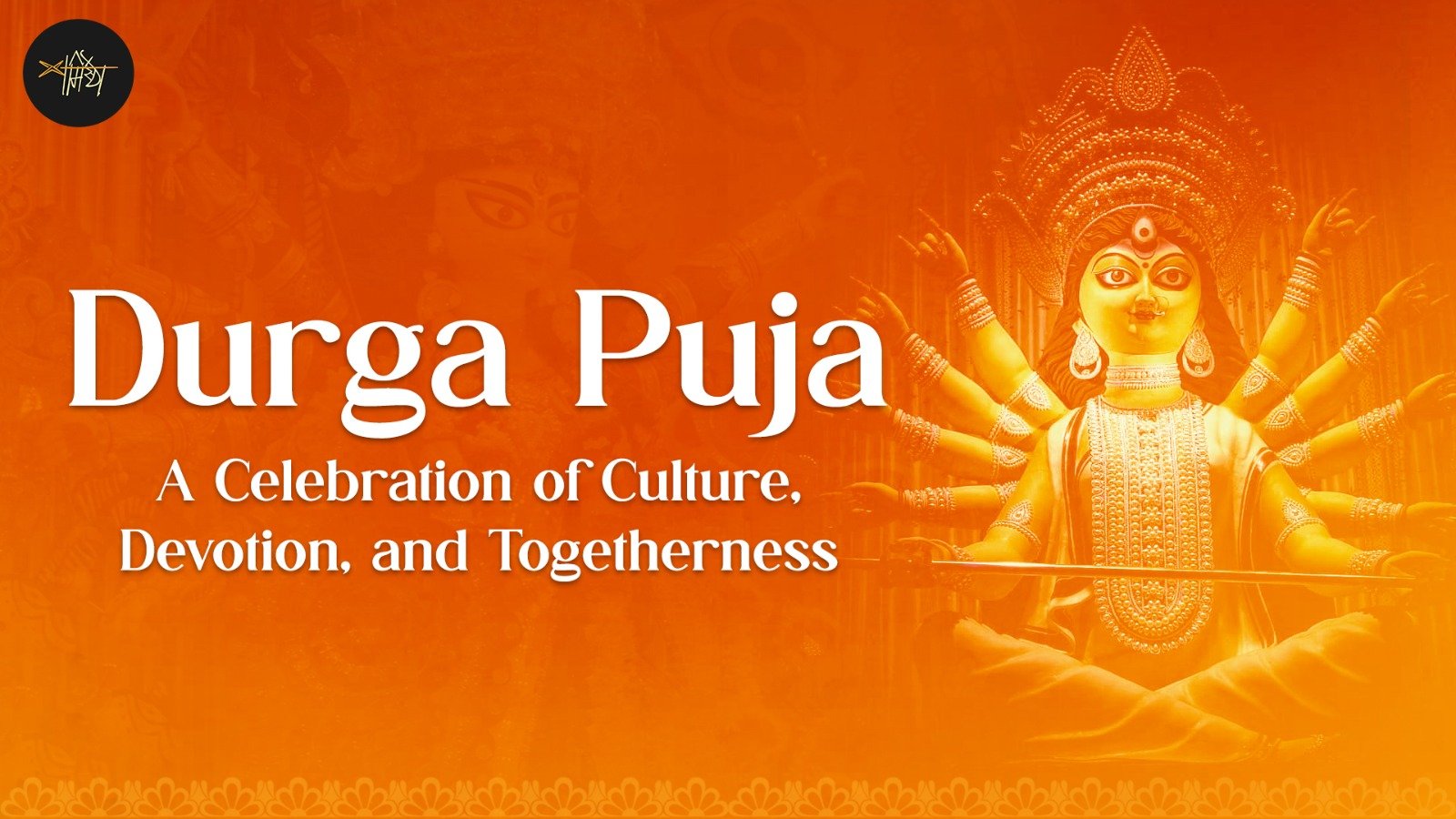Durga Puja is associated with more than one legend from Hindu mythology. The primary myth behind the holiday is the slaying of the buffalo demon Mahishasura. The story first appears in the Devi Mahatmya, which forms part of the Markandeya Purana (5th or 6th century ce). In that account, Mahisa wages a cosmic war against the devas (the male gods of the Hindu pantheon) and prevails because of a boon that has prevented his defeat by a male opponent. Finding their supremacy usurped, the devas—led by the trinity of Brahma, Vishnu, and Shiva—combine their powers to create a warrior goddess named Durga (meaning “impassable”). Armed by the male gods, Durga personifies their collective energy, and she engages Mahishasura in battle. The shape-shifting demon assumes a variety of forms to attack the goddess, whofinally beheads him, in his original buffalo form, on the 10th day of ferocious fighting. DurgaThe eyes painted on a clay image of the goddess Durga in preparation for the Hindu festival of Durga Puja in India. (more) Durga Puja is also associated with the myth of akalbodhan (“untimely awakening”), in which Durga is invoked by the warrior prince Rama, signifying a period of special access to the goddess. The Hindu epic Ramayana tells the story of the abduction of Rama’s wife, Sita, by the demon king Ravana and the war that follows. A Bengali version of the epic, composed by 14th-century poet Krittivas, offers an alternative telling of Rama’s ultimate victory and establishes the celebration of Durga Puja in autumn, a deviation from the customary festive period during harvest season earlier in the year. In Krittivas’s rendering, Rama prays to Durga for assistance on the battlefield after failing to defeat Ravana and his powerful brother Kumbhakarna. Pleased, she grants him divine support and enables him to vanquish Ravana on the 10th day. According to the myth, Rama gathers 108 (a numerologically significant number in Hinduism) lotuses as a sacred offering but can find only 107 at the time of prayer. Undaunted, he prepares to pluck out one of his own eyes to replace the missing flower when Durga appears and restores the last lotus, revealing its absence to have been a test of Rama’s devotion. Durga Puja thus signals the victory of good, symbolised by Durga and Rama, over evil, represented by Mahishasura and Ravana. In contrast to these warlike myths is a myth that marks the festive period as one of rest for the goddess, who is popularly supposed to be visiting her parents’ home, having travelled from the abode she shares with Shiva in Mount Kailash. In most celebrations of the festival, Durga is worshipped with four companion deities: Lakshmi (goddess of wealth), Saraswati (goddess of learning), and the male deities Ganesha (an elephant-headed god who removes obstacles) and Kartikeya (god of war). Clay images are created by artisans and dressed in traditional Indian finery and jewellery. Durga herself, usually 10-armed and riding a lion (sometimes a tiger), is commonly depicted in the act of beheading Mahishasura. She carries in her hands the weapons given to her by the devas; among them are Shiva’s trident, Vishnu’s discus, a conch shell, a curved sword, and a bow and arrow. She is surrounded by Lakshmi, Saraswati, Ganesha, and Kartikeya, represented with their associated symbols and mounts (vahanas): a lotus or owl, swan, mouse, and peacock, respectively.
Durga Puja Mythology
Sarmistha Ray
||
Post On > Oct 14 2024 ||


The Best Places to Visit in West Bengal During Autumn-Winter Transition
2025-10-08 10:55:53

Durga Puja: A Celebration of Culture, Devotion, and Togetherness
2025-08-28 14:45:06

Recitation Was Once Considered a Competitive Sport in Ancient Greece
2025-08-13 13:11:14

Recitation Across Cultures: A Global Perspective
2025-08-06 14:50:44

The Power of the Spoken Word: Techniques and Traditions in Recitation
2025-07-30 13:51:52

Travel in Monsoon: A Magical Experience
2025-07-02 15:03:12